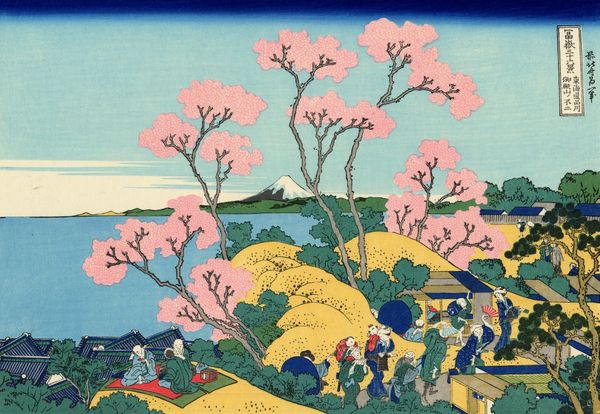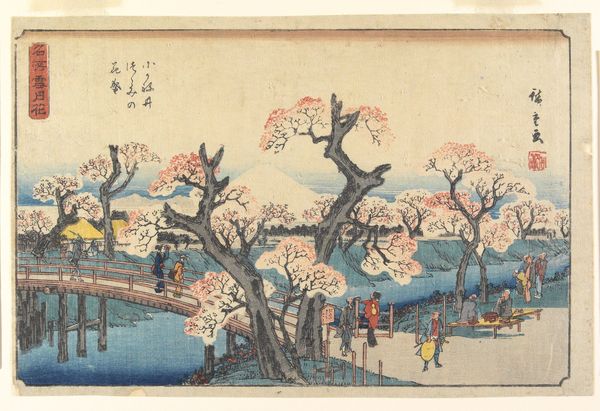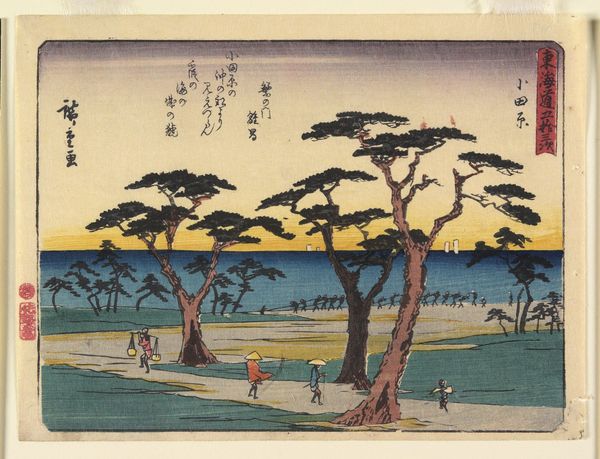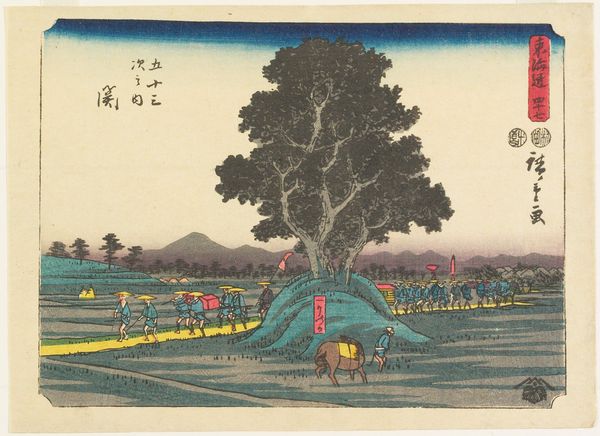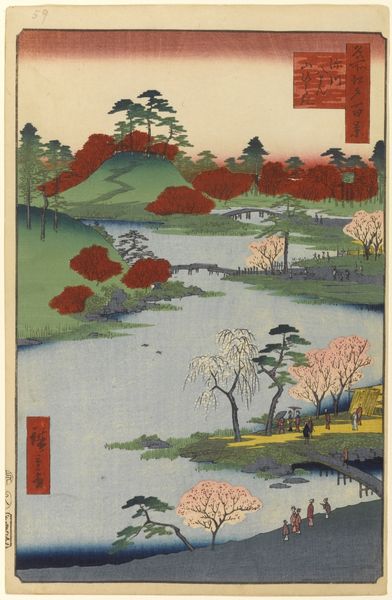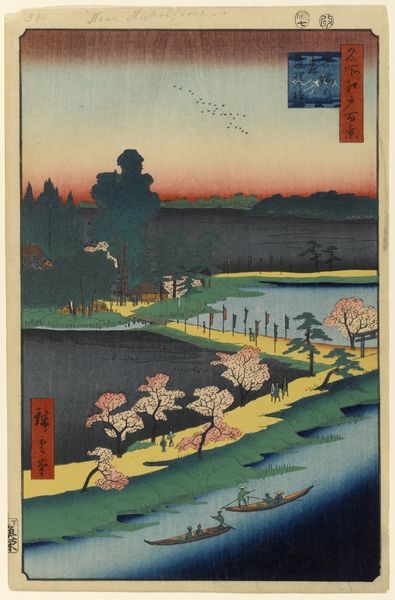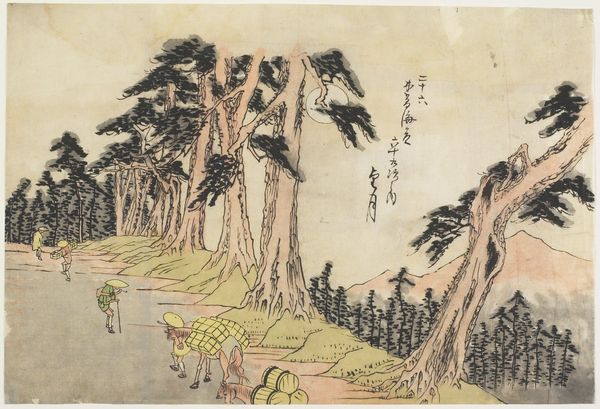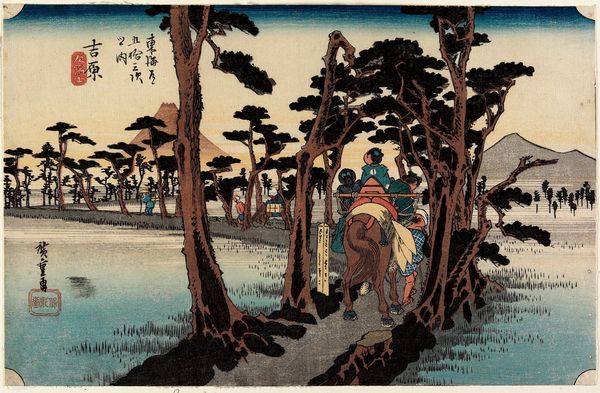
Cherry-blossom Viewing at Asuka Hill c. 1832 - 1834
0:00
0:00
print, paper, ink, color-on-paper, woodblock-print
# print
#
asian-art
#
landscape
#
ukiyo-e
#
paper
#
ink
#
color-on-paper
#
woodblock-print
#
japanese
#
genre-painting
Dimensions: 8 9/16 × 13 5/8 in. (21.8 × 34.6 cm) (image, horizontal ōban)
Copyright: Public Domain
This woodblock print, "Cherry-blossom Viewing at Asuka Hill" by Utagawa Hiroshige, captures a scene of leisure, where cherry blossoms dominate. In Japan, the cherry blossom, or sakura, is a potent symbol, representing not only beauty but also the ephemeral nature of life. This concept echoes through art history, reappearing, for instance, in vanitas paintings of the Dutch Golden Age, where wilting flowers carried similar themes of transience. Like the memento mori, the sakura provokes a bittersweet awareness of life’s fleeting beauty. Consider how such symbols evolve: the Dutch Masters used flowers to remind viewers of mortality, whereas Hiroshige embeds the cherry blossom within a joyous, social context. This divergence reveals the enduring influence of collective memory, shaping how we interpret and re-interpret symbols across cultures. The emotional pull, from somber reflection to joyful celebration, underscores the symbol's capacity to resonate deeply within our subconscious. Thus, symbols like the sakura are not fixed, but cyclical, continually resurfacing in art, each time colored by the ever-changing hues of human experience.
Comments
No comments
Be the first to comment and join the conversation on the ultimate creative platform.

